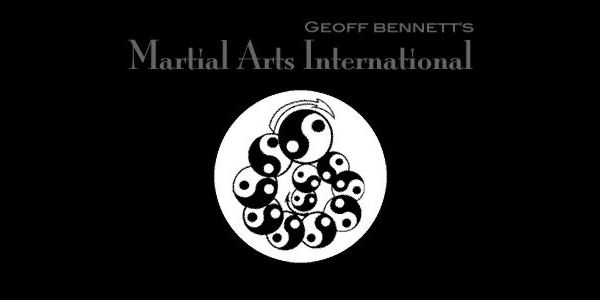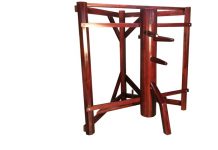Upon observation the footwork of The Progressive Protection Systems (PPS), as taught by Master Geoff Bennett, seems to have more in common with western boxing than the obscure Chinese drunken boxing. Whilst PPS do not teach drunken boxing per say, it does have similar principles with the footwork and the movement of the head and body. The reason this is not readily apparent is that within PPS the movement are done very quick and subtly not overtly as in the true drunken forms . . . even when junior students of the systems are told of this link they are very surprised.
Stance and postures is based on the principle of Joong Sum But Ting Lao (Centre is never still) which is shared with the true drunken boxing. Whilst this is overtly obvious in true drunken with the obvious swaying movement PPS exponent bodies whilst seemingly still are moving, balancing on a fine line between on and off balance. This ensures that rapid response and movement since the energy required to accelerate such a mass is less than one that is rooted fully at rest.
Many systems have this obsession with being on balance. Master Geoff Bennett advocates playing with balance but never been on balance. He explains, “When you are on balance you centre is stationary. We want our centre never to be stagnant but always free and moving”.
He adds further, “When striking you don’t want to be on balance because that mean our power is grounded when want our mass to be in our opponent such that you are basically using a controlled stumble into you opponent”.
What is the advantage of the stumbling principle?? To understand the answer one must fully appreciate the way people and most martial systems normally move. Movement is normally a series of counterbalances. To move forward people normally place their weight on the supporting leg move, counterbalance to lift the front leg then shift the weight back on the front leg. This shifts the inertia of you r body backwards for a fraction whilst counterbalancing. Stumbling ensure that the inertia is always travelling in the intended direction without the need for counterbalancing. Thus movement is streamlined and more economical and less telegraphic with the perception by the opponent that you are moving twice as quick
Most of our hand strikes are done with this stumbling principle in mind and even some of our evasion movements have this principle-however on a very subtle level. Here PPS shares similar power generating principle to drunken system. Both PPS and drunken encourage by the stumbling principle such that the full mass of the practitioner is utilized with gravity to deliver the strike. Notice the power generation principle are similar not the same as PPS utilise to twitch function upon contact to ensure high impulse whilst drunken strikes are more exaggerated with a more pronounced driving and follow through.
Master Bennett also advocates fluidity around the centre of mass. This principle is also parallel to that found in drunken boxing this allows the practitioner if struck to flow around the centre of mass using the opponents force to redirect an almost simultaneous strike in response. A few systems train sensitivity of the arms (eg push hand, chi sao, kakie, hubud), fewer also train sensitivity of the legs (eg chi gerk). Very few systems however train sensitivity of the body to tactile stimulus needed to undertake this redirection of force.
Conclusion
While the Progressive Protection Systems seems modern and neo classical both in appearance and name it is based on the science found in traditional Chinese martial arts. It has adopted principles such as stumbling footwork and centre of mass concepts found in the traditional drunken system but applied them in a more subtle manner in terms spatial and chronological context.
About the author: Alvin Kan has been studying Martial Arts for 18 years starting with Judo, 6 Years with Master Michael Spinks Studying Jin Wu Koon Double Dragon Shaolin Gung Fu and the Past 11 Years with Master Geoff Bennett studying Progressive Protections Systems, which is based on the Five Ancestors Gung Fu System. Alvin also has investigated the arts of Brazillian Ju Jutsu, Kickboxing and Kali and teaches The Progressive Protection Systems in the Hills District, North Western Sydney.
To Contact Alvin Kan : gbmai_hills@hotmail.com
Master Geoff: geoffreybennett@optusnet.com.au
Visit us at : www.martialarts-int.com.au










